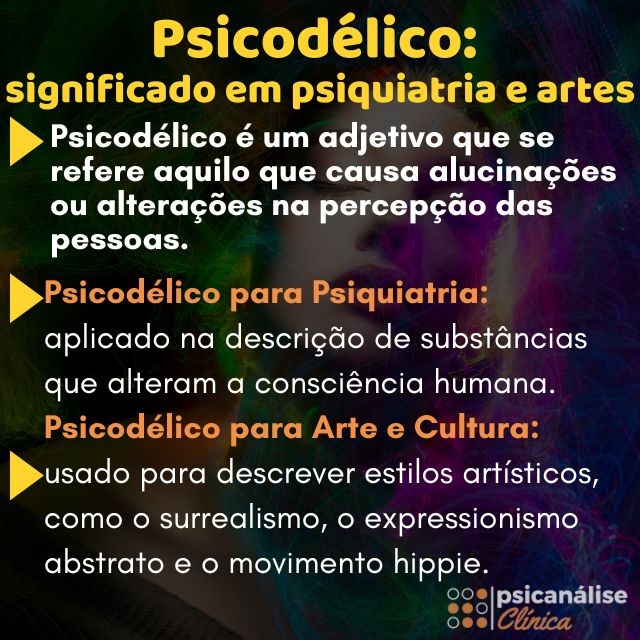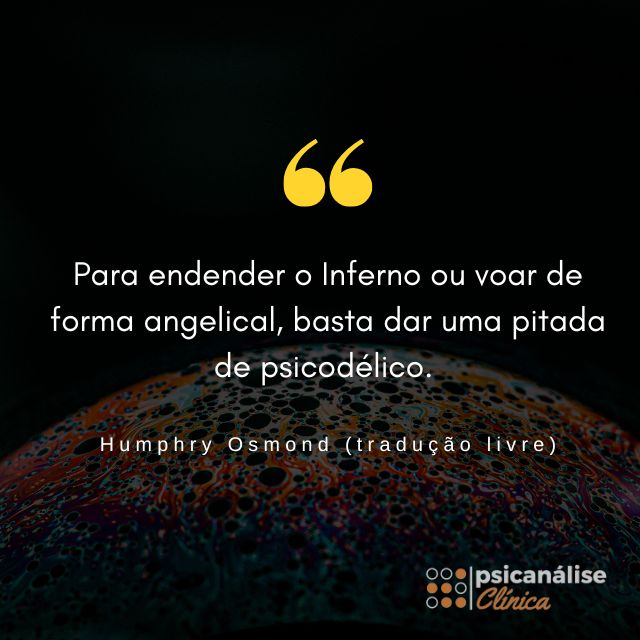Table of contents
Psychedelic is a term applied in several contexts, that is, it is a versatile concept, applied in the field of psychology, as well as in art and culture. In psychiatric terms, the term is applied to describe substances that alter human consciousness These include lysergic acid (LSD), psilocybin (mushrooms), and others.
Whereas, about culture and art, the term psychedelic was used to describe artistic styles In this sense, with this article we will bring you the meaning of the term psychedelic within these two fields, as well as its uses and applications.
Dictionary meaning of psychedelic
In the dictionary, psychedelic is an adjective referring to that which causes hallucinations or changes in people's perception By extension, in the field of art, it refers to that which in some way mimics the effect created by hallucinogens.
It can also refer to the excess of colors and absence of patterns that are usual, that is, a place, decoration, clothing, make-up, etc. that brings bright colors, different from what is commonly used.
However, psychedelia is an expression of the mind that produces profound effects on consciousness. The term "psychedelia" is derived from the Greek words psyche (ψυχή - soul) and delein (δηλειν - manifestation). In short, The psychedelic experience is characterized by the perception of never-before-seen, unusual elements of the mind or its creative exuberance.
What is psychedelic?

The term psychedelic was created in the 1960s, when hallucinogenic drugs began to appear LSD, which cause alterations in perception, causing hallucinogenic effects.
However, the term psychedelic is also used to describe all the experiences, lifestyles and culture that explore the mind and the possibilities of consciousness. These experiences include the exploration of new forms of:
- art;
- music;
- thought;
- philosophy;
- spirituality;
- therapy and other creative areas.
British Psychiatrist Humphry Osmond was responsible for introducing the term "Psychedelic" in 1957, describing it as "that which reveals the mind." This condition describes an altered psychic state, under the influence of hallucinogens, where the individual has access to previously unknown mental perceptions.

Therefore, psychedelics can produce dream-like sensations, psychosis, and religious ecstasy, altering consciousness The term is also closely linked to parties, where its decoration involves environments formed with "psychedelic" objects that aim to "attract" people's minds, such as, for example, the so-called "Rave" parties.
Psychedelics
Psychedelic drugs change the way you feel, see, and think This is the case with LSD (known as lysergic acid), MDMA (ecstasy), psilocybin (a substance contained in hallucinogenic mushrooms), ketamine, ayahuasca, and others.
Most of these drugs interfere with the serotoninergic system, influencing the way the brain handles serotonin, one of the most significant neurotransmitters for the management of mental disorders.
In general, psychedelics are considered illegal because there are many risks associated with their use. Because they can cause serious side effects, such as hallucinations, mental confusion, and unpredictable behavior.
In addition, psychedelics can be highly addictive and can lead to the need to increase the dose to get the same effects. However, some psychedelics are being studied for medicinal purposes.
Above all, it is believed that psychedelics can also contribute to the treatment of mental disorders, but further studies are needed to verify that they are effective and safe.
I want information to enroll in the Psychoanalysis Course .
Psychedelics in psychiatry
The use of psychedelics as a form of treatment in psychiatry is a field of study that has been going on again since the end of the last century. Thus, we will bring here information about psychedelic science, according to an article published by Ipea (Institute of Applied Economic Research), a federal public foundation linked to the Ministry of Economics.
The various researches carried out show that the use of psychedelics to treat psychiatric disorders such as depression and trauma may be more effective than the usual treatments and medications.
In this regard, studies point out that psychedelics also have additional advantages, such as faster relief from symptoms, the need for fewer doses of drugs, and shorter treatment durations.
Read Also: The World as Will and Representation: Concept in PhilosophyScaling the risks more realistically, research has shown promising results on the use of these substances to treat common, high-impact diseases, such as depression, anxiety, trauma disorders, alcoholism, smoking, chemical dependency, and compulsive behavior.
However, the current pharmacological and therapeutic responses are, in most cases, insufficient or inadequate to deal with these problems.
Psychedelic Art and Culture Today
The psychedelic culture, although weakened, still exists, but it was influenced not only by political and social factors, but also by cultural changes, such as the decadence of rock music.
See_also: Dilemma: meaning and usage examples of the wordIn parallel, there is the liminality, also known as "liminal spaces," which emerged as an alternative to psychedelic culture, increasingly present on the Internet This trend has gained strength over the years, enabling new forms of expression to emerge.
In short, Liminarity refers to the process of change between states, when passing from one plane to the next, such as from one state of reality to another. This process of change is actually a passage between worlds, like a corridor connecting two distinct states.
The concept of liminality was first introduced in an internet creepypasta called backrooms, which became extremely popular. This popularity spawned a subculture of psychedelia, which was called "liminal spaces," which focuses on the study of the transition between planes and between worlds.
Psychedelic and Surrealist Art
From the beginning of the 20th century, Surrealist art emerged as a revolutionary movement. The Surrealists of the time believed that art should break free from the demands of logic and reason, going beyond everyday reality and expressing the world of the unconscious and dreams.
In that sense, is a psychedelic art movement considered one of the most important movements in the history of modern art Basically, surrealism can be seen as the visual version of psychedelia, so the variety of colors, the strokes and emotions present in surrealist works, and its own ideals are similar to what would later be known as psychedelia.
Final considerations
Therefore, the term psychedelic has roots in both psychiatry and the arts. In psychiatry, the is used to describe the altered state of consciousness, or trance, caused by chemical or natural substances for therapeutic purposes. In art, the term is used to describe works that produce psychedelic effects that stimulate the imagination, creativity, and intuition.
I want information to enroll in the Psychoanalysis Course .
See_also: What is fetish? 4 characteristics of fetishismIn both cases, the idea behind the term is creating an altered state of consciousness that allows people to explore new ways of seeing reality and that allows them to have new experiences.
The conscious, responsible and lawful use of psychedelics can help people to connect with their inner self and reach a deeper and more meaningful state of consciousness. On the other hand, psychedelic art can help people to expand their consciousness and broaden their perception of the world.
Finally, if you have come this far and enjoyed the article, please like and share it on your social networks. This will encourage us to always produce quality content for all our readers to enjoy.
